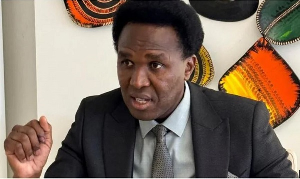The Ghana cedi could now end the year at a rate of between GH¢3.92 and GH¢4.00 to the US dollar, Business Finder can confirm.
It started the year at GH¢3.25 to the American currency, meaning it will lose 75 pesewas in value by December 31, 2015.
Last week, the local currency lost grounds to the American currency to the close the week at about GH¢3.86. It had depreciated in value by 15.3 percent to the US Dollar since January 1, 2015.
Ecobank Research says it expects the volatile currency to weaken in value by a further 3 percent in the remainder of the year, meaning the Cedi’s year-to-date depreciation to the dollar will be about 18.30 percent.
Investment firm, Investcorp, however, maintains its cedi depreciation prediction of 19.20 percent to the world’s most important currency by December 31, 2015.
It says high budget deficit coupled with declining commodity prices and strong import demand during the Christmas festivities will push the value of the Ghana cedi further down.
The Ecobank Research analysis titled ‘Ghana: The Policy Tightening Cycle Continues’ said strong import demand, lower than expected oil revenues, and falling gold receipts will pose downside risks to the cedi.
It explained that the decision by the Monetary Policy Committee (MPC) of the Bank of Ghana (BoG) to increase its policy rate by 100 basis points was surprising given that the International Monetary Fund (IMF) supported reforms and recent monetary policy tightening is starting to yield positive results.
It stated that the positive impact of the foreign exchange injections mainly from the Cocobod syndication and the Eurobond is beginning to wear off. “Cocobod proceeds are earmarked for cocoa crop inputs and the Eurobond proceeds are largely being used to pay-off earlier Eurobond debt. The Ministry of Finance has suggested that it could issue another Eurobond, for $500million, but this is likely to be insufficient to meet foreign exchange obligations given strong import demand.”
Moreover, the Central Bank sales of extra US dollars is not sustainable given that foreign exchange reserves are just above the IMF’s minimum recommended level of 3.0 months of equivalent imports as of end-October 2015.
Click to view details



Business News of Sunday, 29 November 2015
Source: The Finder

















